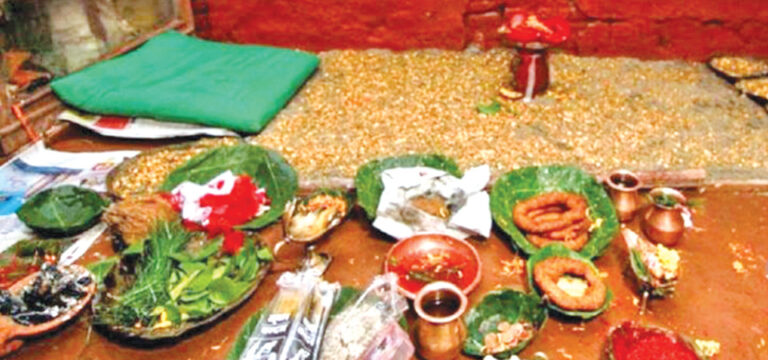
Dashain, regarded as the biggest festival of the year by all Nepali Hindus, begins on Thursday with Ghatasthapana.
According to the information released by the Ministry of Home Affairs (MoHA), the best time for Ghatasthapana, sowing maize and barley seeds in a ceremonial earthen pot for it to grow into ‘Jamara,’ is 11.46 am on Thursday.
“Jamara is believed to bring delight into people’s homes and is also healthy for the body,” said Dev Raj Aryal, head priest of Hanumandhoka.
“The Jamara seeds are also planted at the Dashain Ghar of Hanumandhoka Durbar as well as the royal palaces in Patan, Bhaktapur, Gorkha and other parts of the nation following Vedic rituals,” Aryal said.
He also added that the maize and barley were not the only two seeds that could be used to sprout the Jamara. “Different communities use different grains. For instance, the Marwadi community uses wheat,” Aryal noted.
The Jamara planted at Hanumandhoka’s Dashain Ghar along with the water of the main Kalash (religious utensil filled with water) placed there is also taken to the official residence of the President at Sheetal Niwas on the day of the Bijaya Dashami to honour the head of state.
Similarly, quoting the Culture Division of the Ministry of Culture, Tourism and Civil Aviation, the Home Ministry has informed that the Pachali Bhairav Jatra will be held on coming Monday.
Phulpati is on Tuesday. As has been previously stated by the Nepal Calendar Determination Committee, no specific auspicious moment is required to perform Phulpati that day. The idol of Tulaja Bhawani is also taken out of its temple and taken around the Mulchowk in Hanumandhoka. The recommended time to carry out this procession is 7.11 am, according to MoHA.
Bijaya Dashami this year falls on October 15 and the auspicious time to receive the Tika is 10.02 am.
Dashain will come to an end on October 19 with the Kojagrat Purnima when devotees worship Goddess Mahalaxmi in the evening and stay awake the whole night.
The nine forms of Goddess Durga is worshipped during the first nine days of Dashain, also known as Navaratri.
Source : TRN,






